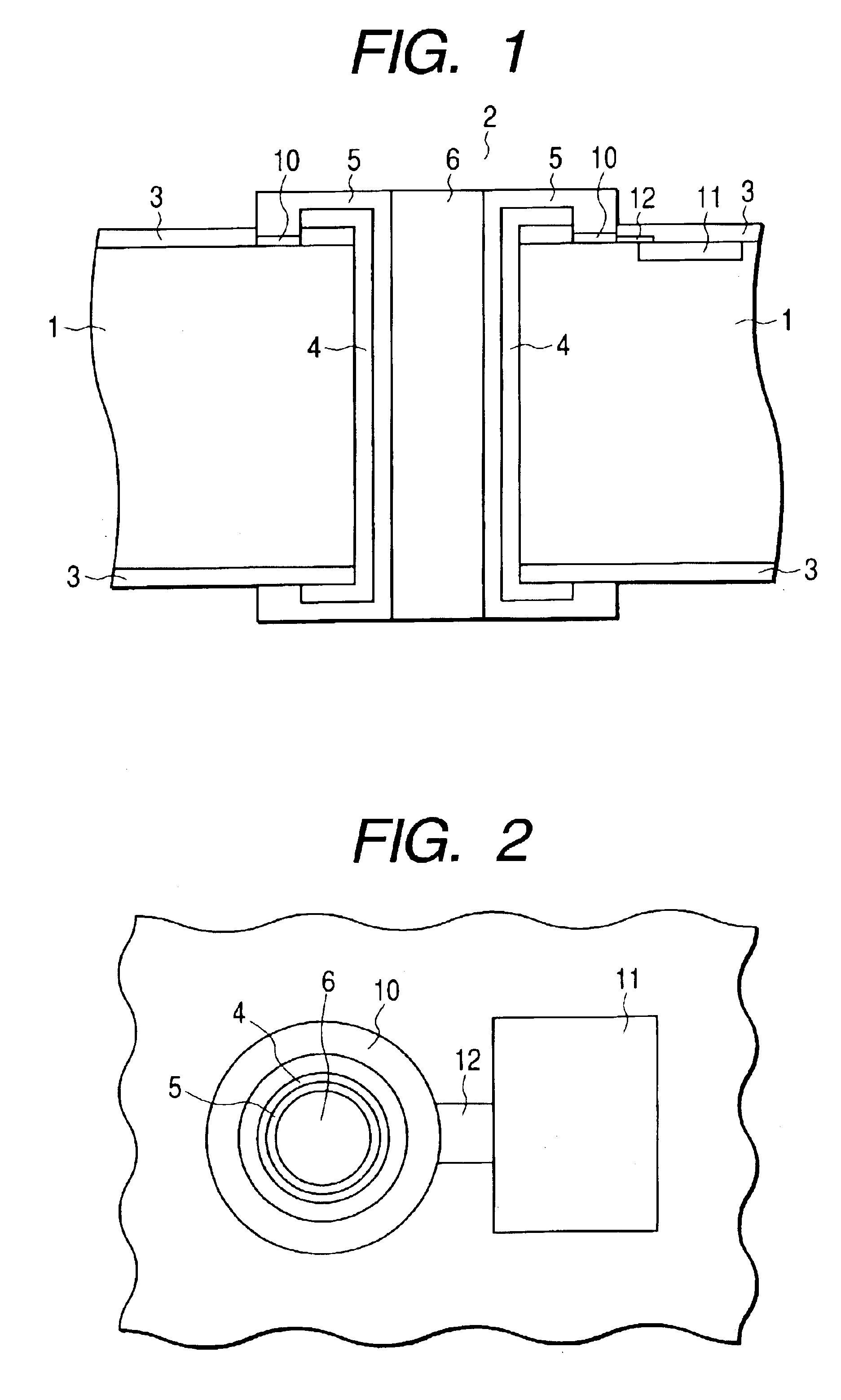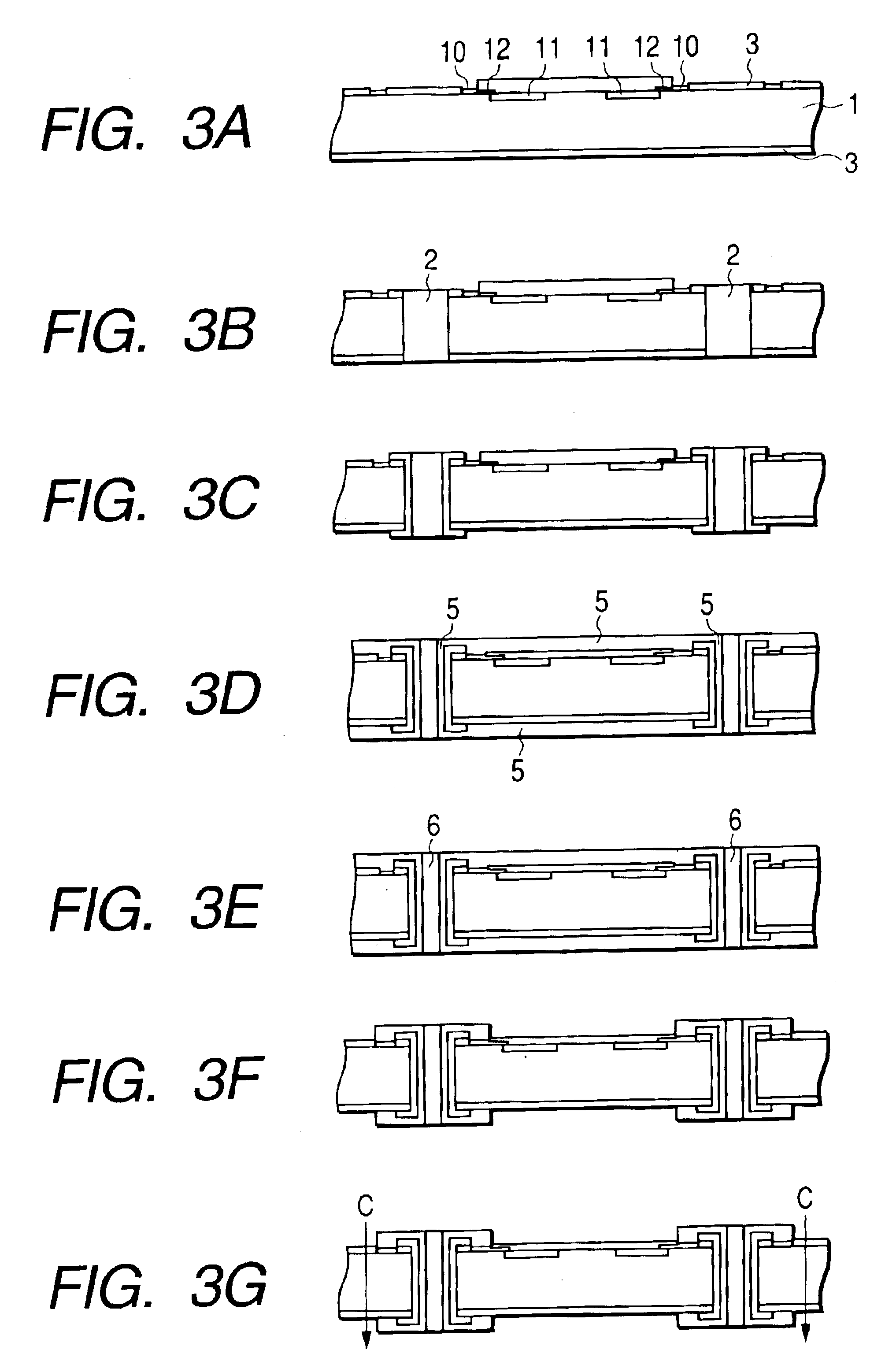Semiconductor device and method of manufacturing semiconductor device
a semiconductor and semiconductor technology, applied in semiconductor devices, semiconductor/solid-state device details, electrical apparatus, etc., can solve the problems of failure of the function of a semiconductor element, increased manufacturing cost, and difficulty in using the step of forming an insulating layer by thermal oxidation treatment, etc., to achieve reliable electrical conduction, low cost, and high aspect ratio
- Summary
- Abstract
- Description
- Claims
- Application Information
AI Technical Summary
Benefits of technology
Problems solved by technology
Method used
Image
Examples
embodiment 1
(Embodiment 1)
A semiconductor device and a manufacturing method which represent Embodiment 1 of the present invention will be described with reference to FIG. 1, FIG. 2, and FIGS. 3A through 3G.
FIG. 1 is a schematic cross-sectional view of a portion of a substrate of the semiconductor device according to Embodiment 1 in which a through hole is formed, and FIG. 2 is a top perspective view of the substrate, showing an internal portion for ease of explanation. The substrate of the semiconductor device is indicated by 1. A through hole 2 is formed through the substrate 1 between front and back surfaces of the substrate. A protective layer 3 is formed on each of the front and back surfaces of the substrate. An insulating layer 4 of an organic material is formed on the inner surface of the through hole 2, and on the front and back surfaces of the substrate 1 around the opening ends of the through hole 2. An electroconductive layer 5 is formed on the inner surface so as to cover the insula...
example 1
Examples of the present invention according to the above-described Embodiment 1 will be described. In Example 1, a semiconductor device was formed according to the form shown in FIG. 1.
First, in a step corresponding to that shown in FIG. 3A, a 6-inch substrate 1 which is a silicon semiconductor substrate is prepared. Electrode pads 10, a semiconductor elements 11 and wiring conductors 12 are provided on a surface of the substrate 1 in advance. Portions other than the electrode pads 10 are covered with a protective layer 3. The thickness of the electrode pad 10 is 0.21 μm and the thickness of the wiring conductor 12 is 0.5 μm. The protective layer 3 is formed of a multilayer of SiO2 and SiN. The thickness of substrate 1 is 625 μm. When these members are formed, an insulating film (not shown) having a thickness of about 0.1 μm is formed between the electrode pad 10 and the substrate 1 and between the wiring conductor 12 and the substrate 1.
Thereafter, in a step corresponding to that s...
embodiment 2
(Embodiment 2)
Embodiment 2 of the present invention will be described with reference to FIG. 7. In FIG. 7, members identical or corresponding to those shown in FIG. 1 are indicated by the same reference characters. FIG. 7 illustrates a substrate 1, a through hole 2, a protective layer 3, an insulating layer 4, an electroconductive layer 5, a filling material 6, an electrode pad 10, a semiconductor element 11, and a wiring conductor 12. In the above-described Embodiment 1, the insulating layer 4 is formed on the inside surface of the through hole 2 and on the front and back surfaces of the substrate 1 around the opening ends of the through hole 2. In this embodiment, the insulating layer 4 is formed only on the inside surface of the through hole 2. The insulating layer 4 in this embodiment is formed in such a manner that a masking insulating film is formed on the protective layer 3 before the insulating layer 4 is formed, and the masking insulating film is peeled off after the format...
PUM
 Login to View More
Login to View More Abstract
Description
Claims
Application Information
 Login to View More
Login to View More - R&D
- Intellectual Property
- Life Sciences
- Materials
- Tech Scout
- Unparalleled Data Quality
- Higher Quality Content
- 60% Fewer Hallucinations
Browse by: Latest US Patents, China's latest patents, Technical Efficacy Thesaurus, Application Domain, Technology Topic, Popular Technical Reports.
© 2025 PatSnap. All rights reserved.Legal|Privacy policy|Modern Slavery Act Transparency Statement|Sitemap|About US| Contact US: help@patsnap.com



